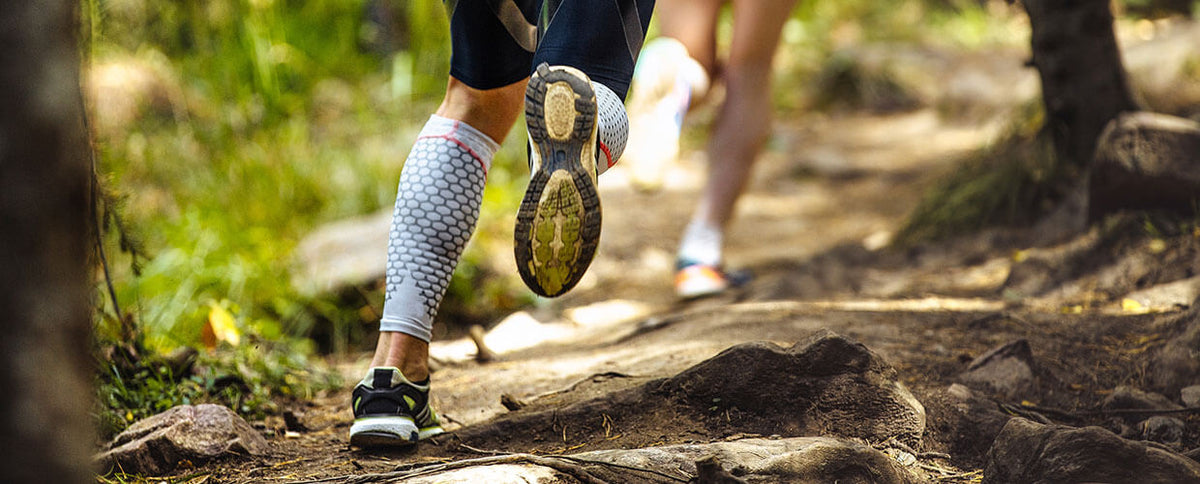4 Signs It's Time to Get Rid of Your Running Shoes

There’s nothing better than having a pair of perfectly broken-in sneakers, which fit like a glove (err, or a sock?) and help you train and compete seamlessly. Yet there is such a thing as a running shoe lifespan — your sneakers can only stand so much, and there comes a point when your broken-in sneaks become a little too broken in, leaving you at risk for foot and ankle problems if you don’t swap them out.
“It’s essential to have good shoes for running and cross-training if you want to stay injury-free and give yourself the best opportunity to succeed in a Spartan race,” says Meghan Kennihan, a NASM-certified personal trainer based in Western Springs, IL. “The right sneakers provide vital cushioning, arch support, and can help increase your performance. The more comfortable you are in your runs and your strength training the longer you can go and the harder you can push.”
But even the best sneakers do get worn down. So here are some tell-tale signs that your running shoe lifespan has come to an end, and it's time to invest in a new pair to keep your training on track and, most importantly, safe.
1. There’s Wear and Tear in Key Places
A Spartan’s sneakers should be dirty (that’s part of the race after all), but Kennihan says if the soles of your shoes are starting to get holes or the treads of the shoe are starting to wear down to flat, then your running shoe lifespan is up. “You should also look at the side of the shoe—if you see a wrinkle in the midsole, that’s a sign the cushioning has worn out,” she adds.
2. Your Feet Get Calluses
“Shoes that are worn out may cause pressure points or callusing on the feet,” says Kenneth Jung, MD, an orthopedic foot and ankle surgeon at Cedars-Sinai Kerlan-Jobe Institute in Los Angeles, CA and medical consultant to pro sports teams like the Dodgers and Lakers. “You may also experience pain in the ball of your foot if the shoe starts to lose stiffness in the forefoot, as well as possible heel or arch pain once there’s decreased support in the arches of the shoes.”
Aside from pain, you’ll be able to tell if any of the areas on your sneakers are no good by doing a quick posture check. When you’re standing straight up in a normal stance, Jung says, it should feel like both feet are flat on the ground. Any tilting to one side or the other is a sign you need more support.
3. Your Running Shoe Lifespan Has Already Surpassed 300 Miles
Or you’ve had them for more than six to eight months if they’re cross-training shoes, says Kennihan. Remember to track your mileage—and if you’re running, weight training, and cross-training in the same pair of shoes keep in mind that you’ll probably need new sneakers sooner.
“It’s smart to have a few pairs of sneakers that you rotate to give them time to heal from the pounding,” says Kennihan. “This lets the foam of the sneaker recover and will help them last longer.” And while you might be a brand loyalist (and there’s nothing really wrong with that), it's beneficial to have two different pairs of sneakers instead of multiple pairs of the same kind. “Having at least two different shoes in your rotation will force your foot to work differently instead of stressing the muscles and tendons in the same position every day,” Kennihan says.
4. Your Terrain Training Is All Over the Place
Aside from your mileage, where your training takes place can wreak havoc on your running shoe lifespan, mainly from external factors like the type of ground you’re running or cross-training on, warns Jung. And while sneakers can withstand a lot of abuse from the elements, it’s a good idea to continuously check them if you’re frequently training outdoors. “I tell patients to check the tread of their sneakers in addition to the upper part of the shoe every two to three months for any breakdown,” says Jung.



